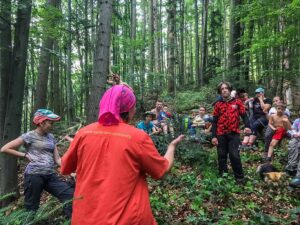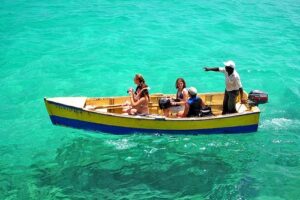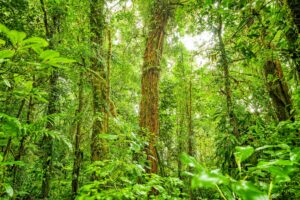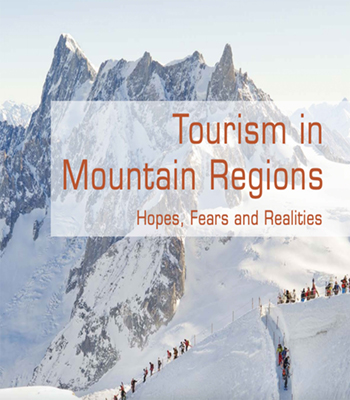
聚焦系統性管理的保護區研究
本文討論了保護區研究的系統方面,特別關注系統治理。

保護區嵌入在各種地理、價值-倫理、文化和政治尺度上的社會經濟-生態相互作用的動態系統中。 例如,最近的能源政治加劇了現有的可再生能源發電土地使用壓力,並對保護類別的目標和目標提出了挑戰。 根據 IUCN 框架,保護區的類別或分類受到區域政治和文化差異的影響,這涉及保護區在社會、生態和經濟相互作用中的所有方面。 該類別對當地人口如何受到影響或如何從一個地區的保護中受益,以及什麼樣的遊客來或與該地區互動有影響。 保護區。 該類別還受到當地人口和遊客或遊客的接受程度的影響。
This paper discusses systemic aspects of protected area research with a particular focus on systemic governance. Protected areas are embedded within a dynamic system of socioeconomic-ecological interactions on various geographical, value-ethical, cultural and political scales. For example, recent energy politics exacerbates existing pressures on land use for renewable energy generation and challenges the goals and objectives of protection categories. The category or classification of a protected area according to the IUCN framework is influenced by the regional political and cultural differentiations, which concern all aspects of protected areas in their social, ecological and economic interactions. The category has an influence on how the local population is affected or benefits from the protection of an area, and what kind of visitors are coming to or engaging with the protected area. The category is also influenced by the acceptance of the local population and visitors or tourists.

保護區越來越多地作為多功能管理區運作,遊客和居民被納入管理理念。 類別群體對遊客管理和保護區治理具有決定性和反向影響,其本身受政治和文化特徵的支配。 不斷變化的遊客價值倫理會影響保護區的治理,需要建立新的伙伴關係以實現可持續管理。 本文綜合了山區環境中的這些系統方面,並總結了未來研究的大綱。
Protected areas increasingly operate as multifunctionally managed areas where visitors and inhabitants are integrated into the management concept. Category groups have a decisive and inverse influence on visitor management and protected area governance, which itself is steered by political and cultural characteristics. Changing value ethics of visitors affect the governance of protected areas and new partnerships need to be built for their sustainable management. This paper synthesizes such systemic aspects in a mountain context and concludes with an outline for future research.


保護區已經從最初建立初期的純保護避難所,如北美的黃石國家公園或歐洲阿爾卑斯山的瑞士國家公園 (SNP),演變為當今復雜的社會經濟生態系統 (Scholz 2011) ,嵌入在國際、國家、區域和地方地理、政治、價值倫理和文化水平(Lockwood 2011;Jentoft 等人,2007)。 改變文化和價值倫理(當地)人口和遊客的需求,在公共話語和參與中表達得更強烈進程、氣候變化、社會學和人口變化、政治上加大的壓力用於可再生能源發電的土地利用,以及人口增長和增加的土地利用的總體壓力閒暇時間進一步增加了保護區可持續管理的複雜性。
Protected areas have evolved from sanctuaries of pure conservation in the early days of their first establishments, with the Yellowstone National Park in North America or the Swiss National Park (SNP) in the European Alps, into today’s complex socioeconomic-ecological systems (Scholz 2011), embedded within various interactions and conditions at international, national, regional and local geographical, political, value-ethical and cultural levels (Lockwood 2011; Jentoft et al. 2007). Changing cultural and value-ethical demand by the (local) population and by visitors, expressed more strongly in public discourse and participative processes, climate change, sociographic and demographic change, politically enhanced pressure on land use for renewable energy generation, and overall pressure on land use for population growth and increased leisure time add further layers of complexity to the sustainable management of protected areas.

保護區的類別是保護區管理人員與其利益相關者之間相互作用的核心決定因素。該類別的定義和形成部分取決於保護區治理模式的相互作用,包括遊客管理,當地居民的參與和支持,以及考慮不同遊客群體的需求。考慮利益相關者的需求(遊客、居民、當地企業和組織)和管理行動決定保護區是否可以在指定類別的任務範圍內有效管理。三角形中的反向影響公園類別與管理機構、接受和/或參與的關係人口在文化和價值倫理方面以及自然和社會變化方面受到框架和監管通過公共法規和政治。這些相互關係可以從不同的概念來理解保護、教育或可持續發展等觀點,在世界各地不同的社會有不同的解釋。
Categories of protected areas are central determinants within the interactions between a protected area management and its stakeholders. The category is defined and shaped partly by the interactions of the protected area governance model, including visitor management, by the participation and the support of the local population, and by the consideration of the demand and needs of different visitor segments. The consideration of stakeholder needs (visitors, residents, local businesses and organizations) and the management actions determine whether the protected area can be managed effectively within the mandate of the assigned category. The reverse influences in the triangular relation of the park category on the governing body, on the acceptance and / or participation of the population, on cultural and value-ethical aspects and on natural and social changes, are framed and regulated by public regulations and politics. These interrelations can be understood from different conceptual viewpoints, such as conservation, education or sustainable development, that are interpreted differently in different societies worldwide.
保護區的地理環境是影響這些價值的另一個重要因素,因為不同的人口密度導致定義、管理和接受保護區類別的場所不同。 山區是目標高度衝突的地區,因為這些地區是全球生物多樣性保護的熱點,為人類提供生態系統服務,例如娛樂、旅遊和水力發電,同時能夠保護重要的(自然和文化)景觀。 當前發展的影響(例如可再生能源的增加)可能在敏感山區更早地發現對全世界保護區的需求),這突出了對山區保護區進行研究的必要性。
The geographical context of protected areas is another important factor influencing these values as different population densities lead to different premises on which protected area categories are defined, managed and accepted. Mountain regions are areas of highly conflicting aims as these regions are hotspots of biodiversity protection worldwide, providing ecosystem services for human use, such as recreation, tourism and hydro-power energy production, while enabling the preservation of important (natural and cultural) landscapes. The influences of current developments (such as an increase in renewable energy demand) on protected areas worldwide may be detected earlier in sensitive mountain areas, underlining the need for research on protected areas in mountain regions.

文/ Frieder Voll
提供/Prof. Markus Pillmayer
圖/Website Resource
























